Illustrator Interview: Fahad Faizal on choosing illustration styles, creating characters and drawing flies
Posted by Yamini Vijayan on June 05, 2018Fahad Faizal, illustrator and animator, has illustrated two books - Unni's Wish and Fly in Space for Pratham Books this year.
He started drawing at the age of three and hasn’t stopped since. He is married to Sunaina, his classmate from NID, and they work together from their cozy home-studio in Kochi calling it BABAKIKI. Fahad is a foodie, he loves cycling and tending to the plants in his balcony garden. But what he loves the most is playing with his son, Orhan.
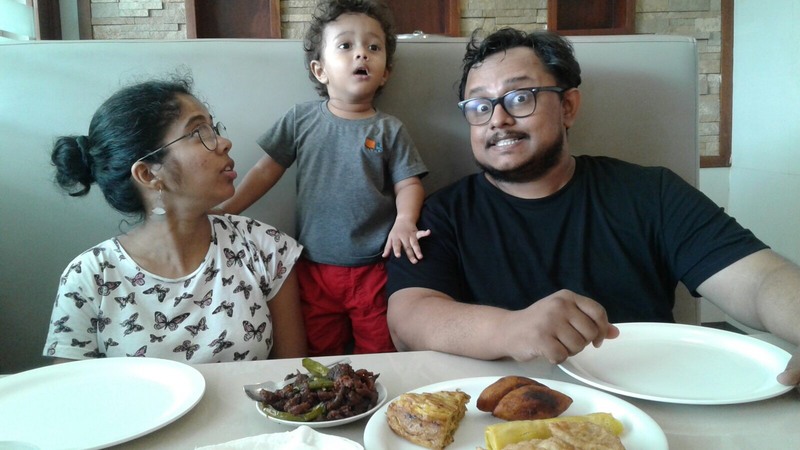
Read Assistant Editor Zeba Imtiaz's interview with Fahad to learn more about his illustration process, approach, and inspiration.
You illustrated two books for Pratham Books this year. What excites you about illustrating children’s books?
The sheer act of drawing always excites me. It is a good break from animation, which is fundamentally the main thing we do. Unlike animation here I get to spend more time on one image. Exploring the details is always fun.
How did you decide your approach for each of these books?
I did Unni's Wish first. I really liked that story because I was able to relate to it somehow. And to add to that I took a trip to this place called Wagamon and stayed in a house like the one I drew. That was fun. I always enjoyed drawing black and white images. Just with shades of grey you can add a lot of depth and it’s not that common to see children's book in Black & White. The story supported it.
Fly in Space on the other hand, I took a different route of flat colours. In fact, fly as a character is something I did recently in an indie comic called Autobiografly. Though that was not exactly for kids. But here I tried to keep it simple. Even this story was really inspiring. I believe the concept is the king.
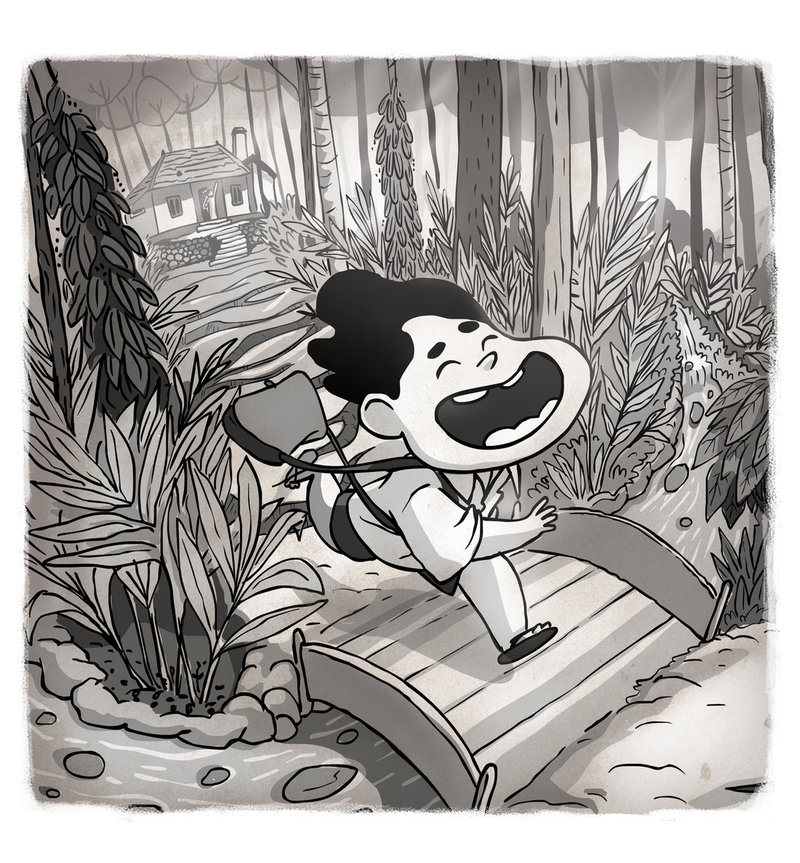
Do you think there’s a difference between illustrating for children and adults?
Fundamentally, there is not much difference between illustrating for adults or children! For both, it's the child in me who is drawing. The content makes the difference. Being a father of a 2 year old I think sometimes we underestimate kids. They are way more intelligent than us.
You have created some absolutely wonderful and memorable characters in your stories. Could you tell us more about the process for creating these characters?
Like I mentioned the story was my base, then I gathered all my memories of being a Malayali boy, and to add to that, the trip to Wagamon really helped. There we met a boy who helped us get back to our cottage through the coffee and cardamom farm. Putting all these together I drew Unni, a boy with little over grown curly hair, who wears an oversized shirt, who looks a bit like my son. What we are exposed to, is what we are.
For Fly in Space again like I mentioned the fly as a character is something I have been working on from my previous work. I tried to keep up the age.
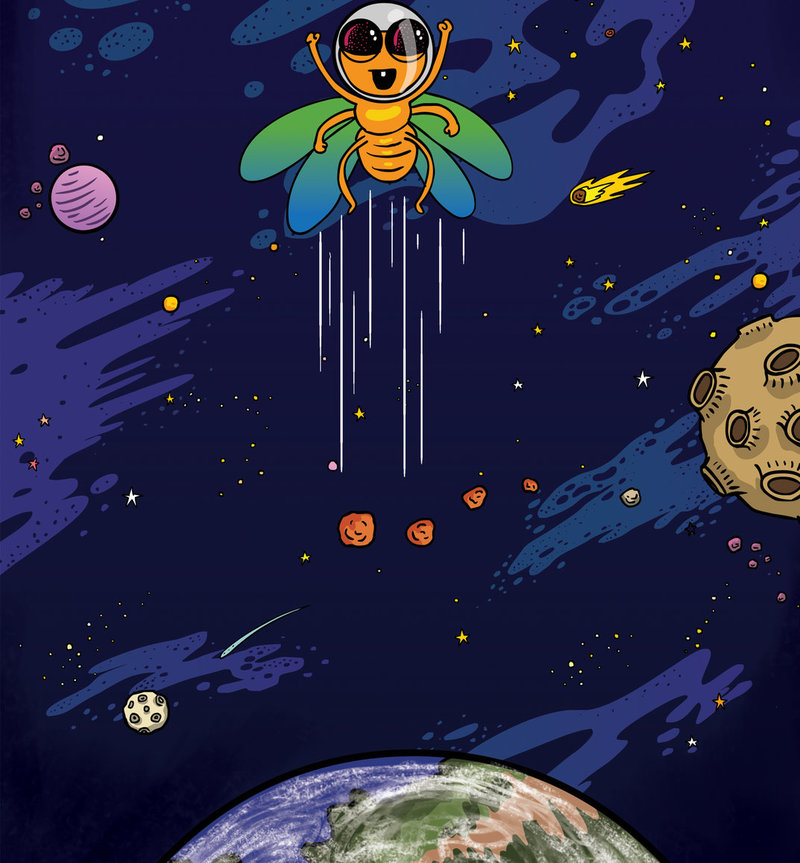
Your visual narratives contain a distinct sense of humour. Is this something you consciously do?
Being in Kerala I am exposed to lots of uncensored humour. I think that is very important to be able to think free. I tried to be there in each of the frames I drew, say if it's Unni enjoying the wind from fan or drinking chilled lime juice. I was aware of what I drew by might not be with too much planning.
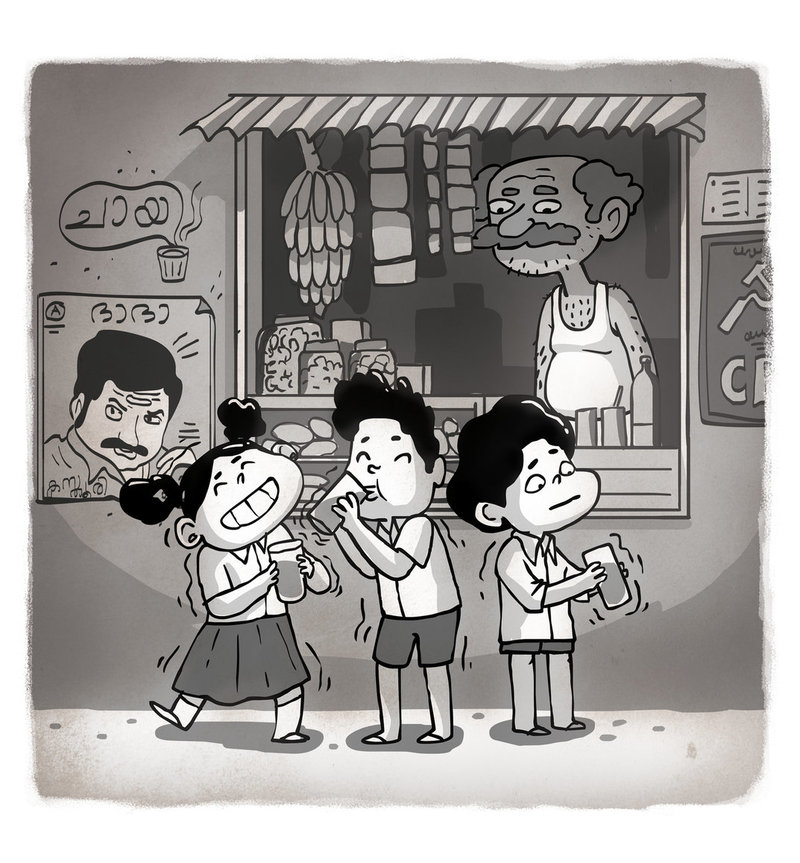
You run a studio called Babakiki along with your wife Sunaina Coelho, also an illustrator and animator. What sort of projects interest you?
We are interested in working on socially relevant projects. Anything that gives us an opportunity to create something new: idea-wise or technique-wise. We believe animation and illustration is a very strong medium that can communicate universally.
What do you most enjoy drawing?
That is tricky question! That’s like asking a foodie what you enjoy about eating. From time to time I immerse myself in studying anatomy, small details of structures or imaginary creatures inspired from what is there in nature. It is all connected.
How did you decide that you wanted to be an artist?
It's the other-way around, the artist decided to be me. I just went along. The sheer act of drawing always excites me.
You can read Unni's Wish and Fly in Space for free on StoryWeaver in Hindi, Tamil, Marathi, English, and Kannada.
Be the first to comment.Spreading the net to find new writing talent
Posted by Remya Padmadas on May 23, 2018In the last year Pratham Books’ StoryWeaver platform has scaled up its offering of joyful multilingual books for children. One of our content streams headed by Bijal Vachharajani is creating 50 brand new books every year. “It's a tall task, one as gigantic as Hagrid!” shared the Potterhead. “Conversations with Outreach partners told us that we needed more engaging level 1 picture books to take to the youngest children. We also wanted to find new writers to work with.”
The editorial team was wondering how they could reach out to new authors who could write Level 1 picture books that used sound and action, which are always popular with young readers and educators alike. That's when wedecided to reach out to the children's theatre community. After all, who better to collaborate with than professionals who have spent much of their career writing, directing and acting in plays for children?
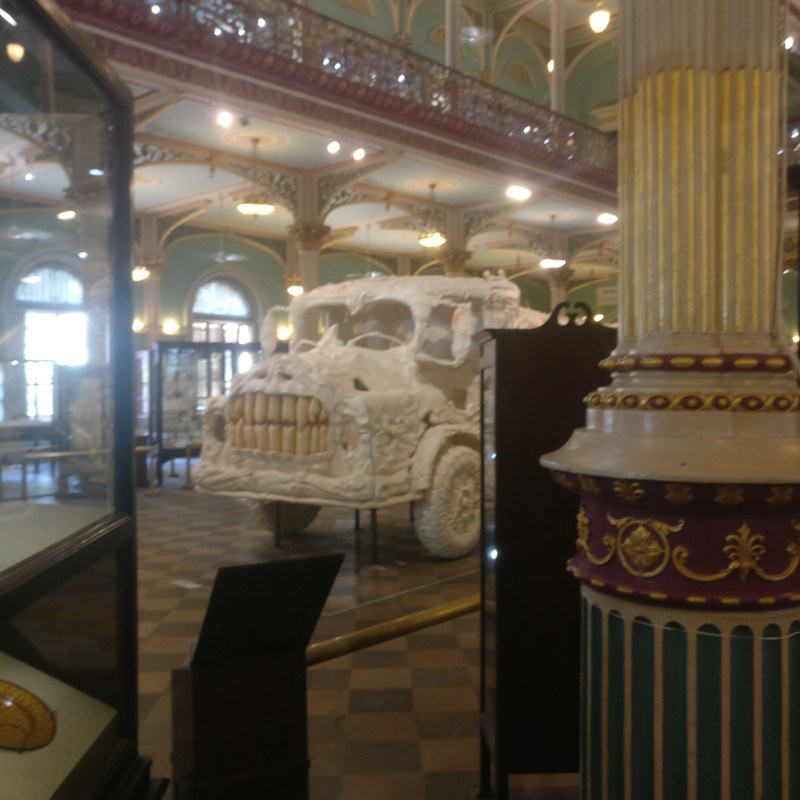
The venue for the workshop was the wonderful Bhau Daji Lad Museum, Mumbai.
Pratham Books Editor Shinibali Mitra Saigal, one of the founders of Kahani Karnival, reached out to her extensive network of writers in theatre. She also stepped in to curate the workshop.
“I think it's important to spread the net when trying to catch new writing talent. By focusing our attention on people with a specialised set of skills, and then guide them to picture book creating, we can make books that use their skills. In this case, it was a strong connection to what children find exciting and a good sense of sound, action, dialogue and dynamic storytelling” said Shinibali who kept in mind diverse skill-sets and an ability to accept feedback and change when choosing particpants. Shinibali’s handpicked group included a perfect blend of people like Sananda, Timira and Preeti who had created plays and scripts in schools for years and who were also very well-versed with picture books.
Authors like Neha Singh and Chatura Rao (winner of the The Hindu Good Books Best Picture Books award 2018) and playwrights like Akshat Nigam who recently won the Hindu best playwright award along with a colleague. Much loved theatre group Gillo Gilehri was represented by Janit and Yashoda. Actor and theatre instructor Lovleen Misra who has a rich background in theatre and television brought her own unique flavour to sessions. Bilingual Shawn Lewis is a strong believer in the idea that sounds rule a script while Shivani Tibrewal who has been teaching children to create scripts and plays loves the idea of whimsy.
Author Chatura Rao was keen to attend the workshop as “Workshops like this help a lot in peer-exchange of ideas.”
Over one-and-a-half days, in the leafy environs of Bhau Daji Lad Museum, a team comprising of Bijal, Shinibali and Assistant Editor Aparna Kapur deconstructed picture books for the participants of the workshop and played games to understand ideas of children's narrative. One of the activities asked the group to split into teams and prioritise what they felt was important in a picture book, using chits of paper that had pre-written statements like ‘A picture is worth a thousand words’ and ‘Picture books should not talk about death, depression and sex’. The teams then had to explain why they chose to order the statements as they had.
Participants talk about writing for children:
Masterclass
The workshop also had the privilege of hosting two amazing picture book creators: prolific author Natasha Sharma and illustrator Tanvi Bhat dropped in to talk to the participants about the finer nuances of writing and illustrating picture books.
“The idea to invite Natasha Sharma for the workshop was very clear. Natasha has written a bunch of books for children which elicit a great deal of excitement and joy. Having attending a number of her sessions, I have seen the queries and the laughter elicited by her books.” said Shinibali. “During her session Natasha took all the participants through the creation of a book. She shared her process and was honest about the things that have worked and have not. She also spoke about how she has evolved as a picture book writer over the years. She stressed on the importance of brevity and cautioned writers against running away with words, and letting the illustrations do the talking. I think that was a very illuminating point for most first-time writers.”
As playwrights, the participants understood the writing process but many of them didn't know what happened to their story once they had written in. Tanvi’s session then looked at the same process of creating books for children but through the lens of an illustrator.
”While making picture books, writers and illustrators are co-creators, so getting an illustrator to talk to the participants was essential. In addition to explaining her own process, Tanvi went into the details of how an illustrator would approach a project in circumstances in which she's involved from the beginning versus one where she receives a complete manuscript, how an illustrator deals with detailed visual notes from the author versus none at all.” Aparna shared.
Tanvi answered the writer’s questions on how involved writers could and should be during this part of book creation, how much of their characters' final look they could imagine, and how the text sometimes has to change once the illustrations are done.
Writing time
Before the workshop began, all the participants were sent a list of themes and ideas to think of potential story ideas around. Post lunch on day 1, the writers shared their story ideas with the group and editors. Their homework for the evening was to take on board the feedback they’d received and write a first draft.
Lovleen Misra’s poetry had the group laughing and sighing in equal measure.
Day two started with each participant taking their first draft to an editor for a one-on-one feedback session. This soon morphed into a freewheeling discussion with small groups sitting under the trees that are spread across Bhau Daji Lad Museum’s courtyard.
Hello Kids!
Sure the writing was great, the coffee was good and the lunch was amazing - but the real highlight of the workshop was when the kids arrived! One hundred feisty, energy-filled kindergarteners from the Sai Baba Path School, Parel brightened up the afternoon with their presence. The kids were there to listen to the authors narrate their ideas which was the real litmus test for their work! Each author took on a group of students, and regaled them with songs, activities and of course, stories!
The workshop wound up with a quick recap of what would happen next, before we bid adieu to the writers, excited about the prospect of fresh stories arriving in our inboxes!
Aparna admitted that her initial apprehensions about the workshop had disappeared. “I was tentative about the workshop because it was the first time we were experimenting with such a format. But at the end of the two days, I was delighted! We'd met a group of people, both smart and humble. They were keen to learn a new skill, and understood what children enjoy, better than most people do.”
“We managed to bring together a bunch of whimsical, creative and slightly off-kilter people who love children and get them to create words\ideas that children will love.” said Shinibali.
We’ve been receiving scripts every day and are confident that we have some real winners on our hands.
Here's a quick look at what happened over the two day workshop.
Be the first to comment.
We did it: One million online reads on StoryWeaver!
Posted by Remya Padmadas on May 20, 2018A million! A great thousand! A thousand thousands! We found out that there was no word for million in Old English simply because its speakers had no great use for it! Well, we're glad that the word million was coined, because here we are, on the other side of #RaceToAMillionReads.
First of all, a big THANK YOU to our amazing community across the world for being such an integral part of what we do. It's your stories, your translations and your unwavering belief that all children should have access joyful stories that have helped us celebrate so many milestones. Without your support and goodwill we wouldn't be where we are or having so much fun doing what we do!
We hope you continue to support us on our journey to find more ways to provide equitable access to stories in mother tongue languages for all children.
See you at... two million? A billion? A trillion?
comments (4)